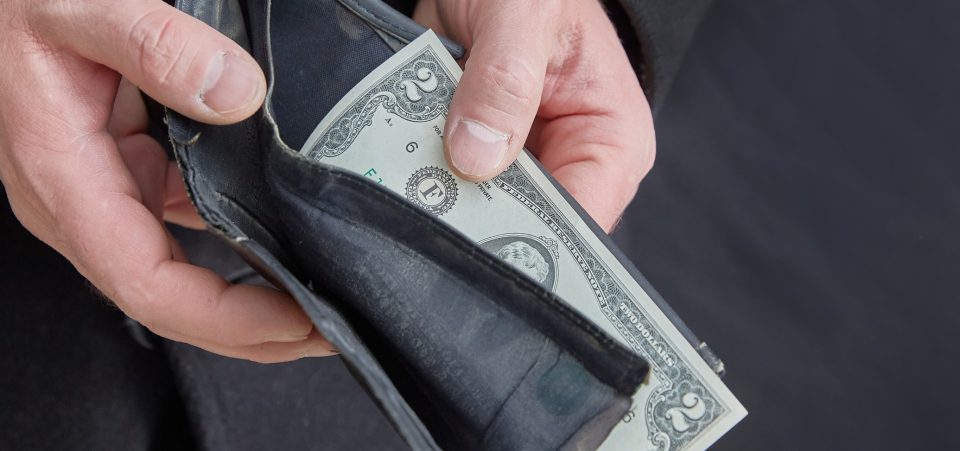U.S. Economy Far From Witnessing Economic Growth
Every day, we’re told that there’s economic growth in the U.S. economy. We see this narrative prevail in the mainstream financial press, and politicians don’t shy away from taking credit for it. When asked for evidence, usually the answer is something to with stock market performance.
Here’s the truth: if you want to see how the U.S. economy is really doing, you have to look beyond the stock market. There’s been speculative mania in the stock market for years. Stocks have moved higher not because of fundamentals, but because of easy monetary policy by the Federal Reserve. The stock market performance isn’t telling us the reality; it’s creating an illusion.
To see if there’s economic growth in the U.S., look at how the average American is doing. In times of true economic growth, you’ll see an increase in the standard of living for the average person. You’ll see them get better jobs, save more money, buy more products, and so on and so forth.
Sadly, the U.S. economy could be far from experiencing growth. Here are some facts you might not have heard:
12% of U.S. Population Is on Food Stamps
Over the past few years, the number of Americans registered in the U.S. Department of Agriculture’s Supplemental Nutrition Assistance Program (SNAP), also referred to as food stamps, has increased.
In fiscal 2021, about 41.5 million Americans were getting food stamps. (Source: “Supplemental Nutrition Assistance Program (Data as of January 7, 2022),” U.S. Department of Agriculture, last accessed January 25, 2022.)
To give you some idea how big this figure is, the total U.S. population is roughly 330 million, so about 12% of the entire population requires food stamps. If all the Americans who use food stamps formed a country, it would be bigger than Canada!
U.S. Saving Rate Plummets
Food stamp usage is just one way to assess the state of the U.S. economy. Look at the U.S. saving rate; Americans have been saving less money than before. This is not a trait of economic growth.
The below chart plots the personal saving rate of Americans. Essentially, it shows how much of their disposable income they’ve been saving.
In 2019, prior to the COVID-19 pandemic, Americans were saving about seven to eight percent of their disposable income. In the midst of the pandemic, due to business lockdowns and government stimulus, the U.S. saving rate surged above 30%. Now it’s below what it was back in 2019.
Scary. If the economy was in good condition and job prospects were great, you would see a higher saving rate.

(Source: “Personal Saving Rate,” Federal Reserve Bank of St. Louis, last accessed January 25, 2022.)
Buy Now, Pay Later—But Many Americans Can’t Pay at All
Inflation is running rampant in the U.S. economy; it’s the highest it’s been in several decades. This has been causing problems for Americans who saved their money. All of a sudden, their dollars now buy less than before.
Many Americans are having a hard time paying for things. As such, over the past few years, there’s been a rise in the “buy now, pay later” (BNPL) method of purchasing goods and services. With the BNPL method, consumers essentially pay for things in installments over time.
According to a recent survey of 1,500 American consumers, 75% of them have used BNPL services. Here’s the troubling part: 36% of the respondents have been late in their payments or have outright missed them! (Source: “More Than One-Third of Americans Have Missed BNPL Payments,” ADWeek, January 19, 2022.)
If This Is Economic Growth, How Will a Slowdown Look?
Dear reader, considering the facts I’ve presented, I must ask: If what we’re experiencing is economic growth, what would an economic slowdown look like?
Mind you, there’s a lot of evidence that there actually isn’t much economic growth in the U.S. economy right now. In addition to the factors I presented above, you could also add items like housing affordability, high rents, low incomes, and much more. I repeat what I said earlier: don’t look at the stock market and think everything is great.
What worries me is that, as American consumers struggle financially, the Federal Reserve is actually planning to raise interest rates. Economics 101: higher interest rates hurt consumption. So, American consumers (and those who sell to them) could be in for a lot more trouble in the coming quarters.
To investors, here’s some food for thought: if consumers are struggling financially, what will happen to companies that rely on discretionary spending? Won’t they have an existential crisis that could lead to their stock prices falling?






